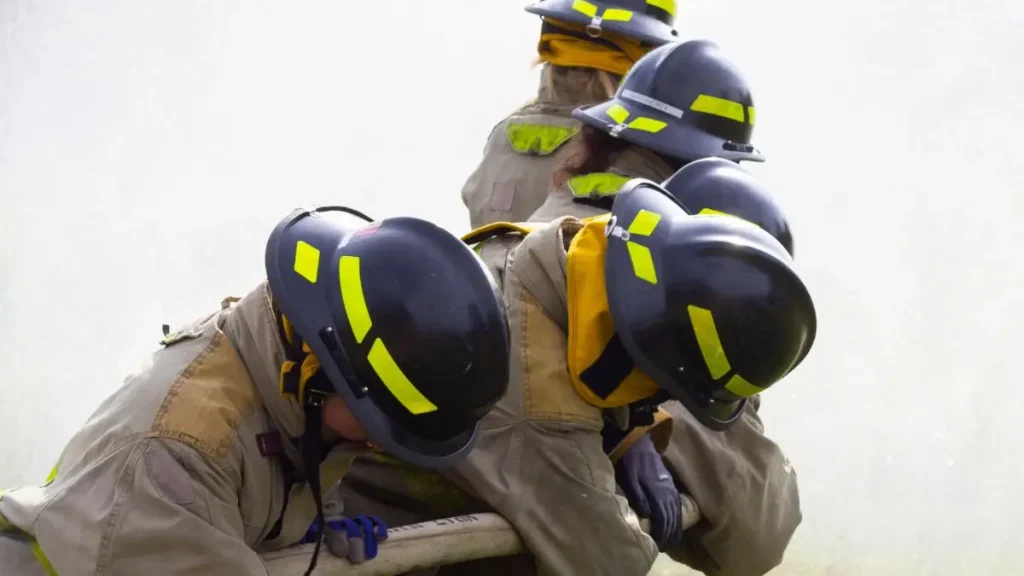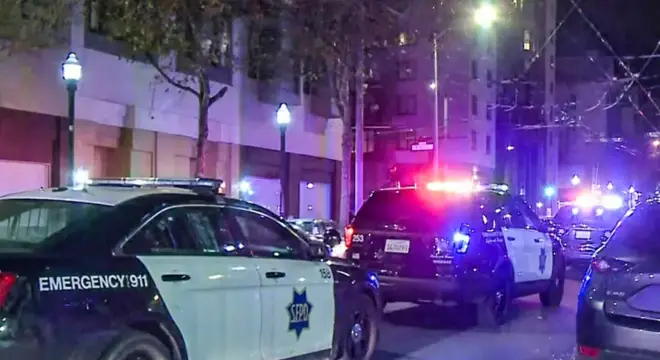Fire Completely Destroys Home in Burrillville, Rhode Island
I drove past Steere Street that Sunday afternoon, and even from a distance, you could feel the heat. The air smelled like burnt wood and engine oil — that sharp, heavy mix you never forget after a fire. Around 2 p.m., flames broke out inside a garage at 124 Steere Street in Harrisville. Within minutes, the entire home was engulfed.
Fire crews from every part of town rushed in, hoses snaking across the road, water spraying into thick black smoke. It didn’t take long for Chief Marcel Fontenault to call a second alarm. That’s how quickly it grew — one moment it was a car fire, the next it was a full-blown house blaze.
The family of three inside had barely enough time to get out. They lost almost everything, including the car parked in the garage. By evening, firefighters were still on the scene, watching for stubborn hotspots. The single-story ranch, built back in 1953, was described by Fontenault as “pretty much destroyed.”
What struck me most wasn’t just the damage — it was how fast it happened. You think you’d have time to grab something, to make a call, to save a memory. But in fires like this, seconds decide everything.
If you live in an older home or keep vehicles and tools in an attached garage, take a minute today to think: would you know what to do if a blaze started right there?
How the Burrillville House Fire Unfolded — A Minute-by-Minute Look

When I read through NRINow’s local report, the timeline of that Sunday fire really hit me. Firefighters were called to 124 Steere Street around 2 p.m., a quiet part of Harrisville where most families were probably just settling into their weekend. According to the report, the blaze began in the garage — small, sudden, and fast.
That’s the thing about garage fires — they don’t give you much warning. A spark near the car, maybe a tool plugged in, or a shorted wire — and before anyone realizes, flames climb from the garage wall straight into the house frame. Within minutes, it became a two-alarm fire, and every town department joined in. Mutual aid poured in from neighboring communities, which tells you how intense it was.
By the time crews managed to get the upper hand, the home was already collapsing inward. The fire’s heat was so strong that firefighters had to circle back multiple times through the afternoon just to keep hotspots from flaring again.
You can picture the chaos — hoses everywhere, the roar of engines, smoke hanging low over the street. It’s a reminder that even a “small” garage fire doesn’t stay small for long.
The Family’s Narrow Escape & What They Lost
TurnTo10 reported that the family was inside the house when the fire began. That detail alone changes how you imagine it. You’re not reading about a faraway story anymore — you’re thinking about being in your own living room when someone yells “fire!”
Thankfully, all three got out safely. That’s the part that gives this story a little relief amid all the loss. Their car, parked in the garage, was destroyed. Every belonging that made their house a home — memories, photos, furniture — was gone in hours.
The structure itself was a single-story ranch built in 1953 — simple, old, and likely filled with dry wood that burns fast. That era’s construction didn’t always have today’s fire-resistant materials or compartmentalized layouts. When fire enters an older roof or attic space, it spreads like paper catching wind.
It’s a painful thought, but also a quiet reminder: older homes need regular checks, not just for electrical or heating, but for safety routes — because when seconds count, it’s not things you save, it’s lives.
Fires can escalate quickly; just like the Georgia home fire that displaced three residents, a single spark in a garage or kitchen can turn into a full-blown disaster in minutes.
The Fire Response & Challenges
If you’ve ever seen firefighters work up close, you know it’s not just about water and speed — it’s about endurance. The crews in Burrillville battled that blaze for nearly six hours, still dousing hotspots at 8 p.m., long after the main flames were gone.
Chief Fontenault said the house was “pretty much destroyed,” but what really stands out is how hard it was to put out. Older homes often hide embers deep in insulation or crawl spaces, which keep burning silently. Crews had to dig, cut, and soak every inch.
Access wasn’t easy either — trees, narrow driveways, older roofing — all slow you down when you’re fighting for control. It’s easy for people to assume a fire is “handled” once the flames are out, but in truth, the danger lingers. These firefighters worked straight through exhaustion to make sure it didn’t reignite overnight.
It’s the kind of work most people never see — the long, smoky hours after the news camera leaves.
Sadly, stories like this aren’t isolated — similar to the Indiana fire that damaged four homes, belongings and memories can vanish in a matter of hours.
Investigation & Cause

Right now, the official cause hasn’t been released, but investigators believe it started in the garage, possibly near the family’s car. That single detail opens a dozen possibilities: a faulty battery charger, a fuel leak, an electrical short.
Until the fire marshal’s report comes out, everything’s still being tested and reviewed. What’s worth knowing is that garage fires are more common than most realize — according to data from the U.S. Fire Administration, over 6,000 residential garage fires happen each year in the U.S., often leading to severe damage or total loss.
If you think about your own garage — the tools, wires, chemicals, or even clutter — it’s easy to see how small sparks can turn deadly. It’s not about panic, it’s about awareness. Fires don’t always start in the kitchen; sometimes they start right under your parked car.
Community Response & Support
News travels fast in towns like Burrillville. By the time the smoke cleared, neighbors were already gathering outside, some bringing blankets, others offering food or a place to stay. The fire departments from surrounding areas came together without hesitation — Pascoag, Oakland-Mapleville, and others sent teams to help.
That kind of unity doesn’t make headlines often, but it’s what really defines small towns. People show up — no questions asked. Later that evening, a few residents shared posts on local Facebook groups, thanking the firefighters for their “incredible effort” and offering prayers for the family.
It’s moments like this that remind you — tragedy can burn down walls, but it also builds bridges. If you live nearby, check if there’s any local fundraiser or support drive. Even a small gesture — a meal, a card, a few dollars — means something to a family starting from scratch.
Would you have someone to call if something like this happened to you? Maybe today’s a good day to make sure you would.
Why Rhode Island’s Older Homes Face Higher Fire Risks
You don’t really think about it until something like this happens — how much age matters in a house’s ability to survive a fire. Rhode Island is full of older homes, especially in towns like Burrillville, Woonsocket, and North Smithfield. Many of these houses were built before modern codes required fire-rated materials, compartmentalized walls, or smoke alarm systems.
According to the National Fire Protection Association (NFPA), older wooden structures burn almost twice as fast as newer homes built after 2000. The reason’s simple — dry timber, outdated wiring, and tighter attic spaces turn these houses into tinderboxes once a flame starts.
In New England’s cooler months, heaters, old furnaces, and stored fuels only add to the danger. What happened on Steere Street wasn’t just a local story — it’s a reflection of how vulnerable thousands of similar homes are across Rhode Island.
If your home was built before the 1970s, this is a quiet wake-up call. A five-minute inspection or a $40 smoke alarm can literally mean the difference between an accident and a disaster.
The rebuilding process can be long and emotionally draining, as seen in the Hamilton home severely damaged in a Sunday fire, where families relied heavily on insurance and community support to start anew.
How You Can Prevent Garage Fires Before They Start
Here’s where you and I can actually do something about it.
Garage fires like this one aren’t freak accidents — they’re usually small problems that never got checked.
Start here:
- Declutter your garage. Boxes, paint cans, and gas containers turn tiny sparks into infernos.
- Check electrical outlets — garages often have cheap extensions or overloaded plugs.
- Inspect your car for leaks or damaged wires. A warm engine or battery fault can trigger ignition.
- Install a smoke or heat alarm in the garage (they’re inexpensive and easy to set up).
- Keep a small extinguisher near the entrance, not inside the garage — so you can grab it safely if something starts.
You don’t need to turn your home into a fortress. Just build small habits that make your space safer.
For solid advice, check NFPA’s home fire prevention guides — they’ve got checklists you can print and stick right on the wall.
And honestly, if you’re reading this because the Burrillville story shook you a bit — that’s a good sign. It means you care enough to prevent the next one.
If you want quick tips and real-time updates about home safety incidents, there’s a WhatsApp feed that shares short, actionable alerts — it’s a great way to stay aware without spending hours searching online.
The Long Road to Recovery for the Family
Rebuilding isn’t just about new walls — it’s about starting over emotionally. The family from Steere Street lost nearly everything in a few hours. Their house, car, and sense of normal were gone by sunset.
In Rhode Island, the next steps after a total loss usually involve insurance inspections, permit reviews, and temporary housing help through local aid or the Rhode Island Emergency Management Agency. It’s a slow process, and paperwork never matches the speed of loss.
But the good news? People show up. In cases like this, local churches, neighborhood groups, and sometimes even strangers chip in to help families rebuild — meal trains, donations, or even just lending tools when the time comes to start again.
The home at 124 Steere Street will probably stand again one day. But for now, what matters most is that the family walked out alive — and that’s something even a fire can’t take away.
Key Takeaways — What This Fire Reminds Us All
If you’ve read this far, you already know this story isn’t just about a single home. It’s about how fragile “safe” can be — and how fast it can change.
The Burrillville House Fire reminds us that safety isn’t built once; it’s practiced every day. A simple garage check, a working smoke alarm, a clear driveway — they sound small, until the day you wish you’d done them.
And it’s about community too — how people who barely know each other step forward when things fall apart. That’s what defines places like Burrillville.
So here’s my question for you: When was the last time you checked your smoke detectors or looked around your garage for hazards?
Because sometimes, taking five minutes today is all it takes to protect everything you care about tomorrow.
“For more real-life home fire stories and safety tips, visit our Home Incidents category and stay informed about incidents in your area.
Disclaimer: All information in this article is based on publicly available reports from local news outlets and fire department statements. Details about the Burrillville house fire may evolve as official investigations continue. Readers are encouraged to verify updates through local authorities and credible news sources.


